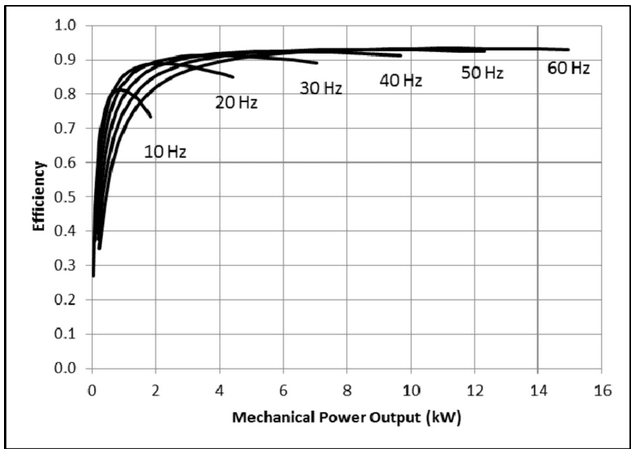Greetings fellow seniors, I am a new mechanical guy who just got into the line in a utility plant and I am a lost one with electrical stuff, so I was wondering I can get some insight and understanding from the brains.
So part of my job was to get the real input(absorbed)motor kW reading from motors of a machine and log them down, however I am not sure what I am asked to do is correct ?
So the motor has a name plate of 160kW with a motor eff of 95% at full load with a power factor of 0.85.
The VFD reading says in a given time averages shows me 114.5kW, 388.0V, 203.0A
I thought I was supposed to divided 114.5kW with 0.96 to get actual motor absorbed power 120.53kW. But instead I was told to take 114.5kW to multiply by 0.96 to get 108.78kW ?!
My plant technician senior shows me that when they use a fluke power analyzer, they will too take the active power reading and multiply by motor efficiency to get the real absorbed power of motor ? Is this correct ?
So part of my job was to get the real input(absorbed)motor kW reading from motors of a machine and log them down, however I am not sure what I am asked to do is correct ?
So the motor has a name plate of 160kW with a motor eff of 95% at full load with a power factor of 0.85.
The VFD reading says in a given time averages shows me 114.5kW, 388.0V, 203.0A
I thought I was supposed to divided 114.5kW with 0.96 to get actual motor absorbed power 120.53kW. But instead I was told to take 114.5kW to multiply by 0.96 to get 108.78kW ?!
My plant technician senior shows me that when they use a fluke power analyzer, they will too take the active power reading and multiply by motor efficiency to get the real absorbed power of motor ? Is this correct ?

![[cheers] [cheers] [cheers]](/data/assets/smilies/cheers.gif)
